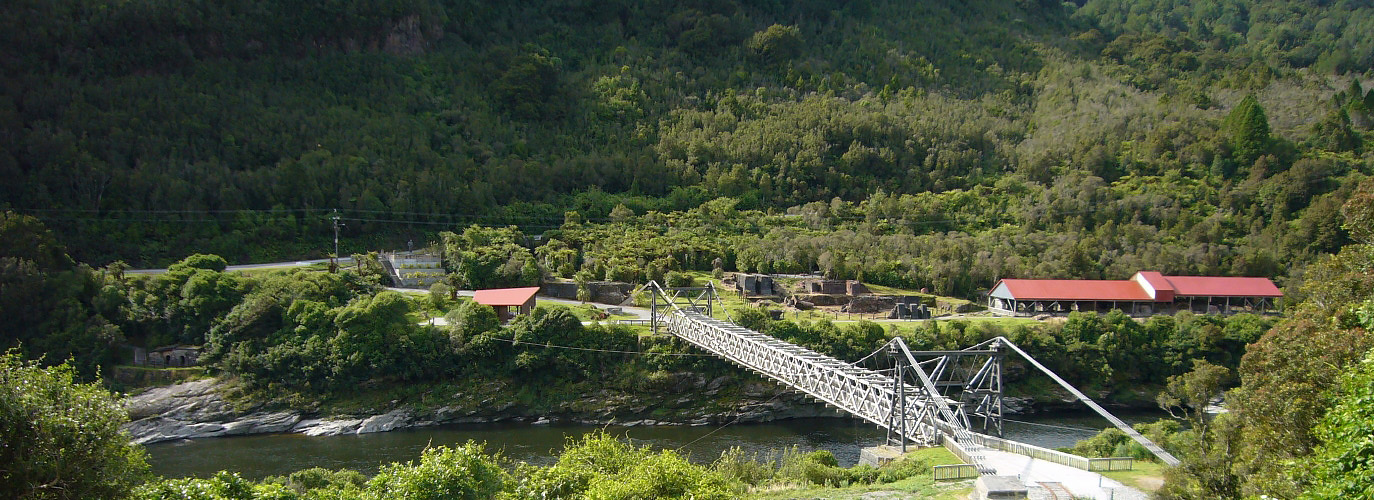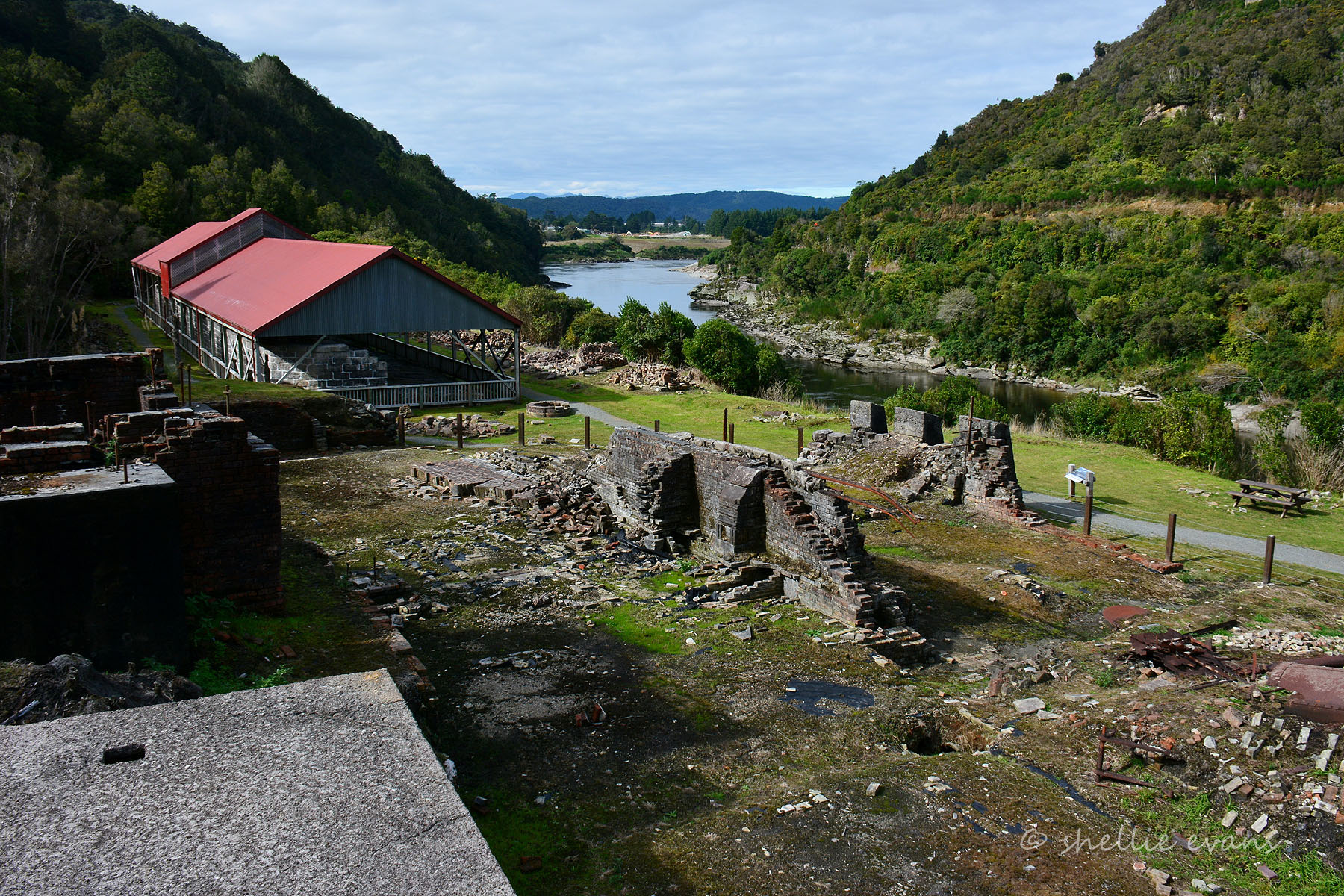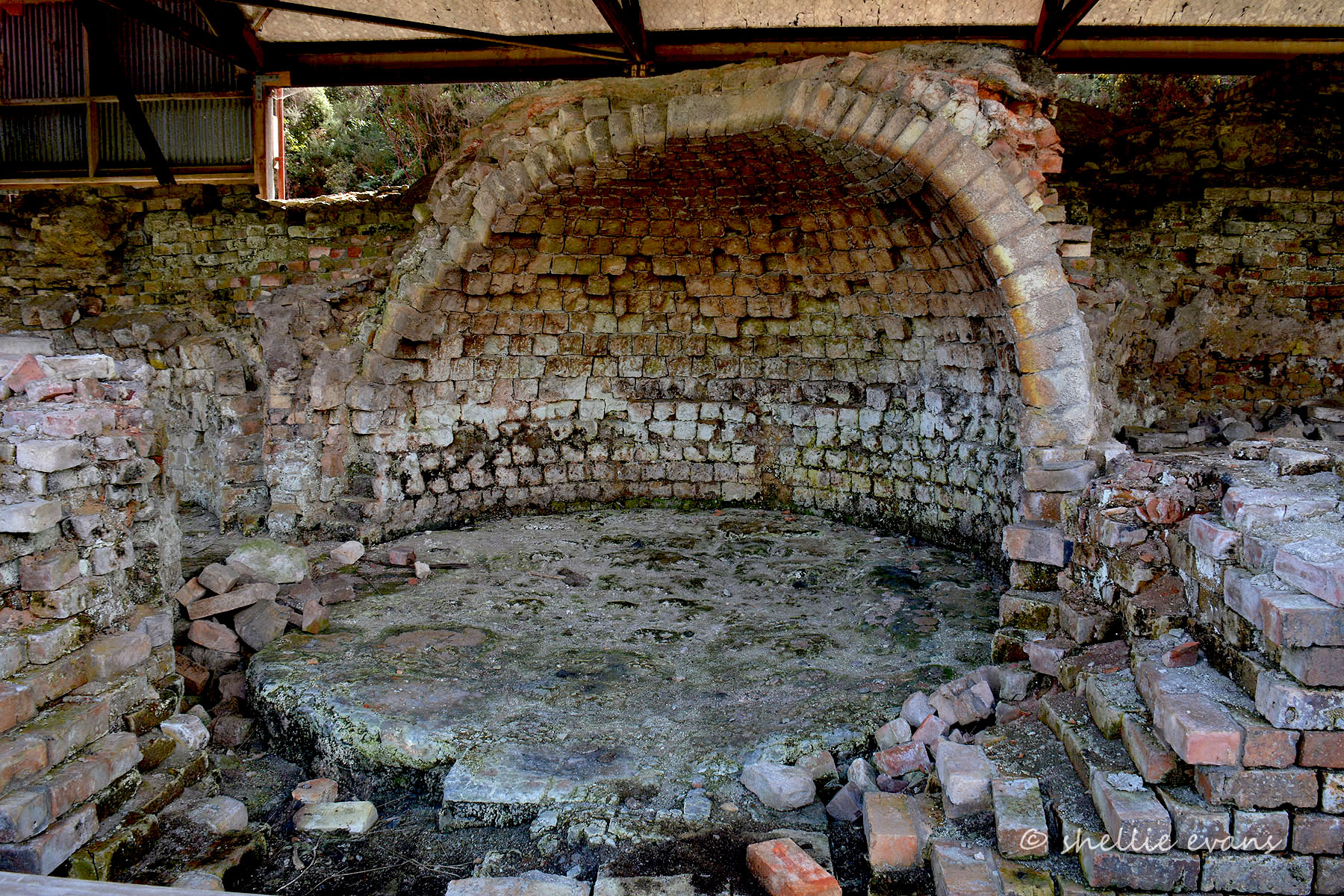The Brunner Industrial Site is one of New Zealand's pre-eminent industrial heritage sites and the most important of the country's historic coal mining complexes. It contains the remains of what was once New Zealand's largest coal mine and it was also the site of New Zealand's greatest mining tragedy. Brunner is situated on the north bank of the Grey River on the West Coast, thirteen kilometres from the river's mouth. It contains the remnants of structures associated with either the extraction of coal or the associated brickmaking and coke industries. These include the remains of coke ovens, (both tunnel-vaulted and beehive), mine shafts, ventilation shafts, brickmaking kilns and foundations for various boilers, engines, pumps and compressors. Thomas Brunner (1821?-1874) was the first Pakeha to observe coal in the Grey Gorge during his 1846-1848 exploration of the West Coast. In 1862 Claude Ollivier, visiting the West Coast from Christchurch, noted that local Poutini Ngai Tahu were working the coal and delivering it to the mouth of the Grey River. The first Pakeha mining of the Brunner coalfield began in 1864 when Mathew Batty opened a mine on behalf of the Nelson Provincial Government, who were interested in exploiting coal resources within their province to supply the growing domestic and industrial demand. Batty and his company were forced out of Brunner in 1866 and the mine was taken over by the Nelson Coalmining Company. The Nelson Coalmining Company struggled to meet the agreed output commitments and the lease was cancelled in May of 1868. However, the company did establish the first coke ovens on the Brunner site. These twin tunnel-vaulted ovens still stand today. Following the cancellation of the lease the mine was taken back by the Nelson Provincial Government and operated by them until 1874. In that year the mine was taken over and run by a group of Melbourne investors for five months, and then bought by Martin Kennedy (1839/1840?-1916), a local merchant who used the profits he had made from trading to firstly establish a gas company and then to invest in gold and coal mining. Kennedy became the sole proprietor of the Brunner mine in 1880. In 1888 he merged his interests at Brunner with the Westport Coal Company to form the Grey Valley Coal Company, of which he became the managing director. It was during Kennedy's tenure that the Brunner mine expanded the most, particularly during the 1880s. This expansion was due to a number of factors including the construction of the Greymouth-Brunner railway and the Brunner suspension bridge in 1876 which meant coal no longer had to be barged downriver. Improvements to the Grey Harbour between 1883 and 1888 also helped, as larger ships, built specially for the West Coast coal trade, could enter the harbour. By the 1880s the Brunner mine was producing more coal than any other New Zealand mine, and at its peak employed more than 300 men and boys. In 1885, for example, 104,001 tonnes of coal, 21 percent of New Zealand's total coal production, came from Brunner. Such an expansion in production meant that more facilities were needed on the site, and consequently the township at Brunner, established in 1864, was replaced by the expanded mine, coke and brickmaking facilities. (The production of coke and bricks, by-products of the mining process, also became an important part of the production from Brunner). With the expansion of the mining plant, the miners and their families moved to the neighbouring settlements of Taylorville, Tyneside, Wallsend and, later, Dobson. The worst mining disaster in New Zealand's history occurred at Brunner on 26 March, 1896. In an explosion of gas and coal dust 65 men and boys died, and the impact on the miners' families lasted for generations. Many of the victims were buried in a mass grave at Stillwater and it was estimated around 6,000 people attended the funeral. An enquiry was held into the disaster and the explosion was initially blamed on an unknown miner. However, civil action taken by some of the bereaved families against the company was successful, at least in terms of the court's decision to award compensation. A memorial to the disaster, erected for the centennial commemoration in 1996, is located on the Brunner Industrial Site. After the 1896 explosion the mining community felt Brunner declined, although in fact production peaked in 1901, and it was another five years after that before the main mine closed. The output from neighbouring mines was still handled by the Brunner complex until the 1930s, but by '1907 the Grey River Argus lamented, "Brunner has a glorious future behind and beneath it. No week passes without removals and no one ever comes. The Brunner of today is a place of gloom and dread, of nasty roofs and unkept streets of disheartened men and decaying streets" '. [Richardson, 1995: 99] Various small-scale operations extracted coal from Brunner throughout the 1920s and 1930s and the last coal was taken from the Brunner site in 1942. After mining finally ceased, the site and structures gradually became covered with scrub. In the 1970s the New Zealand Historic Places Trust/Pouhere Taonga began to take an interest in the Brunner site. The coke ovens were first classified as historic in 1977, and the Trust became involved in clearing the site and protecting the remnants from weather and vandalism. During the 1980s two archaeological excavations took place at Brunner under the aegis of the Trust. This involvement of the Trust represents one of the earliest efforts in New Zealand to conserve and interpret an industrial site and is an important part of both Brunner's history, and the history of heritage conservation as a whole. Coal is one of the major extractive industries of the West Coast and the Brunner Industrial Site can be seen as the pre-eminent coalmining heritage site. It was, during the nineteenth century, the largest producer of coal in New Zealand, and remained an important industrial site well into the twentieth century, producing coke and bricks as well as coal. The physical remains of this industrial site are significant reminders of the variety of industries that once took place at Brunner. In particular the remnants of the beehive coke ovens are of international significance, as few examples of them remain anywhere in the world. There is still potential for Brunner to reveal more of the nineteenth and twentieth history of coal mining as the site has not been fully excavated. The Brunner mine explosion of 1896 remains the single biggest mining disaster in New Zealand history, and the Brunner site therefore has significant commemorative value, both for the local community and the nation. It is also a major landmark along the Grey River.





Location
List Entry Information
Overview
Detailed List Entry
Status
Listed
List Entry Status
Historic Place Category 1
Access
Able to Visit
List Number
4996
Date Entered
6th June 1990
Date of Effect
11th November 2016
City/District Council
Grey District
Region
West Coast Region
Extent of List Entry
Extent includes part of the land described as Sec 2 SO 449212 (NZ Gazette 2012 p. 1067; RT 581572), Westland Land District, and the site known as Brunner Industrial Site thereon. (Refer to extent map tabled at Board meeting on 27 October 2016).
Legal description
Sec 2 SO 449212 (NZ Gazette 2012 p. 1067; RT 581572), Westland Land District
Location Description
On north side of Grey River.
Related listings
Stay up to date with Heritage this month
